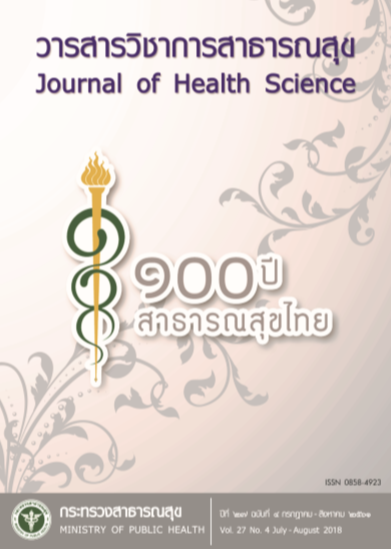Development of a Model for the Control and Prevention of Zika Virus Infection in Chanthaburi Province
Keywords:
model development, controlling and prevent of Zika viral infectiousAbstract
Zika viral infection is a communicable disease caused by Aedes aegypti. Infection in pregnant woman can lead to microcephaly in newborn which affects child development and survival. The objective of this study was to develop and evaluate a provincial model for the control and prevention Zika viral infections. It was conducted in Chanthaburi province using participatory learning process among stakeholders from 3 villages, one from each of 3 districts. Participants were village headmen or the assistants, village health volunteers, health officers, and household leaders, altogether 30 persons per village. Data were collected by using questionnaire, group discussions, co-operation record, and observation notes.
Evaluation process included knowledge and behaviors of 150 accidental sampling villagers in the implementation areas with regard to Zika virus infection and the household mosquito index. The data were analyzed by using descriptive statistics and paired t-test. As for the results, there were 6 activities inthe model: (1) disease surveillance, (2) announcement of Zika viral epidemic as a provincial agenda, (3) implementation mechanism, (4) public relations and risk communication, (5) provision of support by partner organizations, and (6) raising awareness in the communities. The evaluation of the model revealed significant increase in knowledge and prevention behavior among the villagers, as compared to the situation at the beginning of the program (p‹0.05). In addition, the house index had become significantly lower than the baseline level (lowere than 10%). The results of this study identified the strength of the model in improving surveillance, multi-stakeholder implementation of the prevention and control mea-sures, and strengthening provincial and local coordination mechanisms. The model should be applied in other communities with similar social context.
Downloads
Downloads
Published
How to Cite
Issue
Section
License
Copyright (c) 2018 Journal of Health Science- วารสารวิชาการสาธารณสุข

This work is licensed under a Creative Commons Attribution-NonCommercial-NoDerivatives 4.0 International License.







